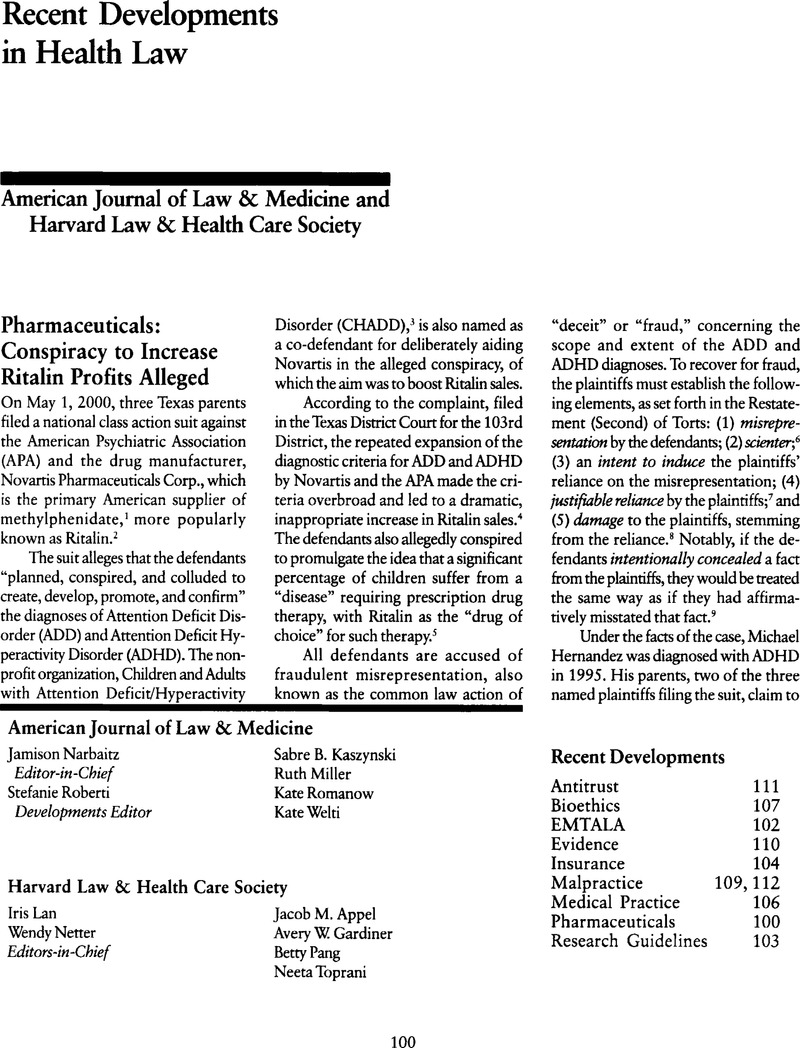The plaintiff filed the class action suit in the U.S. District Court for the Southern District of California. He seeks to represent all California residents who used or purchased Ritalin. Notably, this plaintiff also brought a claim under the California Consumer Legal Remedies Act, Civil Code Section 1750, claiming that the defendants engaged in proscribed competitive practices. The plaintiff also alleged that the defendants' misrepresentation of material facts concerning Ritalin and the failure to disclose risk-related information constitute deception under the Act.
Vess v. Ciba-Geigy Corp. (S.D. Cal. [No. 00 CV 1839], filed September 13,
2000).
Google Scholar
